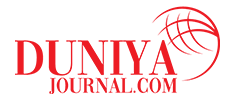

As we mark the winter solstice on December 21st, with the shortest day and longest night, this cosmological event is celebrated by different cultures around the world in a variety of ways, as we go from the dark, back into the light.
Physical remains in the layouts of late Neolithic and Bronze Age archaeological sites, such as Stonehenge in England and Newgrange in Ireland whose primary axes of both of these monuments seem to have been carefully aligned on a sight-line pointing to the winter solstice sunrise at Newgrange and the winter solstice sunset at Stonehenge.
Yule or Yuletide (“Yule time” or “Yule season”) is a festival historically observed by the Germanic peoples. Scholars have connected the original celebrations of Yule to the Wild Hunt, the god Odin, and the pagan Anglo-Saxon Mōdraniht.
As Europe became Christianised, Yule underwent a Christening, resulting in the term Christmastide. Some present-day Christmas customs and traditions such as the Yule log, Yule goat, Yule boar, Yule singing, and others may have connections to older pagan Yule traditions. Terms with an etymological equivalent to Yule are still used in Nordic countries and Estonia to describe Christmas and other festivals occurring during the winter holiday season.
In the Persion tradition, meaning “birth,” Yalda or Sheb-e-Yalda is marked by family gatherings, candles (originally, fires lit all night), poetry readings, and a feast to get through the longest night of the year. Nuts and fruits, including watermelon and pomegranates, are traditionally eaten—legend has it that eating the fruits of summer will protect you from illness in winter.
In China, Dong Zhi is celebrated with family gatherings and a big meal, including rice balls called tang yuan. To mark the end of the harvest season, the holiday also has roots in the Chinese concept of yin and yang: After the solstice, the abundance of darkness in winter will begin to be balanced with the light of the sun.
The winter solstice in Japan, called Toji, has a few interesting customs associated with it. Traditionally, a winter squash called kabocha is eaten, one of only a few crops that would have been available. A hot bath with yuzu citrus fruits is believed to refresh body and spirit, ward off illness, as well as soothe dry winter skin. And apparently, rodents called capybaras love yuzu baths as well—it’s become popular for Japanese zoos to throw the fruit into the warm waters the animals soak in on the winter solstice.
The indigenous Hopi people of present-day northern Arizona celebrate the winter solstice as part of their religious tradition of kachina (or katsina), which are spirits representing the natural world. In the Soyal solstice ceremony, led by a tribal chief, the sun is welcomed back to its summer path with ritual dances. Gift-giving to children, prayers for the coming year, singing, and storytelling are also part of the festivities. Prayer sticks and kachina dolls are often made in preparation for the celebration.
“Little new year” is marked in South Korea with the traditional eating of a red bean porridge called patjuk. Red is considered to be a lucky color, so the dish is meant to keep bad spirits away while embracing good wishes for the coming year. Other Dongji traditions include giving calendars, as Korean kings used to do, and socks. And this is a day Koreans wish for snow: cold weather on the winter solstice is said to bring a bountiful harvest, but warm weather will not.

Leave a Reply